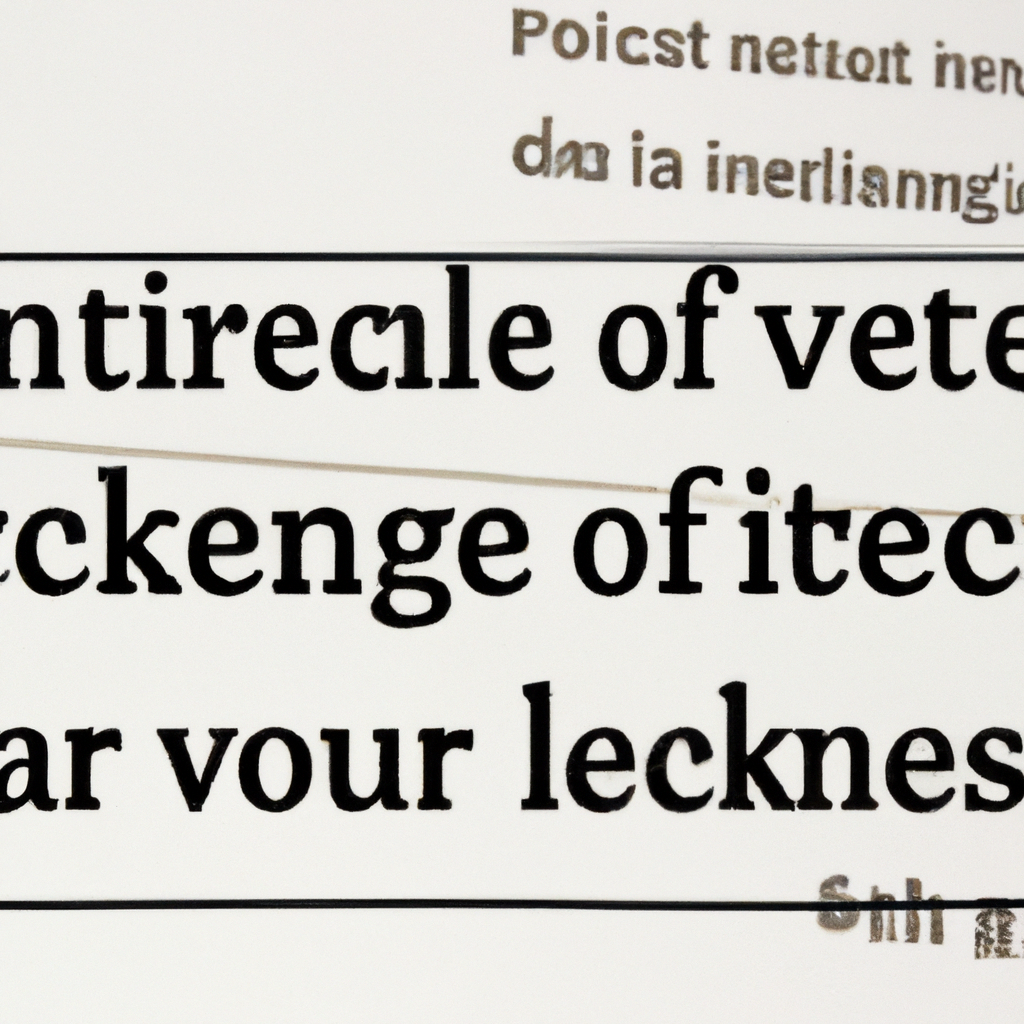Recognizing and Addressing Aggression in Fearful Dogs
Recognizing and Addressing Aggression in Fearful Dogs: A Delicate Balancing Act Aggression in fearful dogs can be an intricate

In a world where wagging tails and enthusiastic barks often steal the spotlight, it’s easy to overlook the silent struggles of our furry companions. Some dogs face a debilitating fear that manifests itself in a surprising and alarming way – aggression. While aggression may seem paradoxical in fearful dogs, it is their desperate attempt to protect themselves from perceived threats in an intimidating world. Today, we embark on a journey to explore the intricate world of recognizing and addressing aggression in fearful dogs, shedding light on the potential causes, effective strategies, and the unwavering dedication required to help these dogs find their peace. Leave your preconceived notions at the door and let us delve into the uncharted territory of understanding and compassion, for it is here that we uncover the hidden beauty within these brave souls yearning to be set free.
Recognizing the Signs of Aggression in Fearful Dogs
When it comes to understanding our beloved four-legged companions, recognizing signs of aggression in fearful dogs is crucial for their well-being and our safety. Dogs, like humans, have their own ways of expressing their emotions, and fear can often trigger aggressive behaviors. Keeping a close eye on your dog’s body language can help you identify potential signs of aggression early on, allowing you to take the necessary steps to ensure their comfort and safety. Below are some key indicators to look out for:
- Growling: A low, rumbling sound in the throat is often a clear sign of aggression. It is important not to ignore growling, as it indicates that your dog is feeling threatened or uncomfortable.
- Stiff body posture: Dogs in a state of fear aggression may exhibit stiff body language. Watch for a rigid stance, raised hackles, or a tucked tail, as these signs suggest your dog is ready to defend itself.
- Showing teeth: Baring teeth, often accompanied by a curled lip or snarling, is an unmistakable sign that your dog is feeling threatened and may resort to aggression if pushed further.
Remember, fearful dogs may display aggression as a defensive mechanism, and it is crucial to approach them with caution and respect. Swiftly identifying these signs in your four-legged friend will allow you to address the root of their fear and help create a safe and comfortable environment for them to thrive in.

Addressing Fear-Based Aggression: Understanding the Root Causes
In order to effectively address fear-based aggression in any context, it is crucial to delve deep into the root causes that trigger such behaviors. Fear-based aggression can manifest in various forms, including defensive attacks, excessive barking, or even destructive behavior. By understanding the underlying factors that contribute to fear-based aggression, we can develop appropriate strategies to help both humans and animals navigate these complex situations.
The Role of Socialization:
- Insufficient socialization during a pet’s early development stages can be a major cause of fear-based aggression.
- Exposing animals, especially dogs, to different people, animals, and environments from a young age can help build their confidence and reduce their tendency for aggression.
- Positive interactions and early training are key to nurturing a well-rounded and well-behaved pet.
The Impact of Past Trauma:
- Pets that have experienced abuse, neglect, or traumatic events in their past may develop fear-based aggression as a defense mechanism.
- Building trust through patient and consistent positive reinforcement training can help them overcome their fear and reduce aggressive tendencies.
- Seeking professional help and implementing desensitization techniques can also contribute to their healing process.
By recognizing these root causes and employing appropriate methods, both pet owners and professionals can work together to create a safe and harmonious environment for all involved.

Empathy and Patience: Building Trust with Fearful Dogs
When it comes to working with fearful dogs, empathy and patience are the key ingredients for building trust and helping them overcome their fears. Understanding the unique needs of these dogs and approaching them with kindness can make a world of difference in their journey towards confidence and happiness. Here are a few valuable tips to help you establish a strong connection and foster trust with fearful dogs:
- Be present and calm: Creating a safe space for the dog is crucial. Stay calm, maintain a relaxed posture, and speak in soothing tones to reassure them that they are in a secure environment.
- Respect their boundaries: Fearful dogs require their personal space to feel comfortable. Avoid forcing interactions or rushing their progress. Allow them to approach you at their own pace and respect their need for distance.
- Use positive reinforcement: Rewarding small victories helps build confidence. Encourage and praise any brave behavior they display. Treats, toys, and gentle pats can go a long way in reinforcing positive associations.
By practicing empathy and patience, we can gradually earn the trust of fearful dogs and provide them with the support they need. Remember, every small step forward is a triumph. With time and dedication, these dogs can develop into well-adjusted and happy companions who feel safe in the world around them.

Proven Strategies to Manage and Rehabilitate Aggression in Fearful Dogs
Dealing with aggression in fearful dogs can be a daunting challenge, but with the right strategies, it’s possible to manage and rehabilitate their behavior. It’s important to approach these dogs with patience, empathy, and a tailored plan that addresses their specific fears and triggers. Here are some proven strategies to help you on this journey:
- Create a Safe and Secure Environment: Providing a calm and predictable environment is crucial for fearful dogs. Designate a quiet space where they can retreat and feel secure. Use baby gates or barriers to create boundaries and prevent triggers from entering their safe zone.
- Focus on Positive Reinforcement: Building trust and confidence through positive reinforcement is essential. Reward your dog with treats, praise, or play whenever they exhibit calm behavior or successfully face their fears. This positive association will help them develop a more positive outlook.
- Implement Desensitization Techniques: Gradually expose your fearful dog to the things that trigger their aggression in a controlled and safe manner. Start with low-intensity versions of the triggers and gradually increase exposure. This helps them build resilience and learn that the triggers are not as scary as they initially thought.
While managing and rehabilitating aggression in fearful dogs can be challenging, it is crucial to seek guidance from a professional dog trainer or behaviorist. They can provide personalized strategies and support to address your dog’s specific needs. Remember, every dog is unique, and patience and consistency are key to helping your furry friend overcome their fears.
By implementing these proven strategies and seeking professional guidance, you can make great strides in managing and rehabilitating aggression in fearful dogs, ultimately helping them lead happier and more balanced lives.
Future Outlook
In the world of wagging tails and unconditional love, it’s hard to imagine that some dogs may be harboring a deeper fear, one that manifests as aggression. However, as responsible pet owners, it is our duty to recognize and address this aggression, giving our furry friends the chance to overcome their fears and lead fulfilling lives.
Today, we delved into the intricate world of fearful dogs, unraveling the complex interplay between fear and aggression. We explored the subtle signs that may go unnoticed by the untrained eye, shedding light on a topic that often remains hidden in the shadows.
Our journey started by understanding the roots of fear-based aggression, acknowledging that it is not a result of waywardness or inherent meanness, but rather a protective response to perceived threats. From there, we dived deep into the canine psyche, exploring how to differentiate between reactive behavior and genuine aggression, enabling us to better interpret our furry companions’ unique language.
As we learned more about the triggers that can set off aggression in fearful dogs, we also discovered a multitude of techniques to address this challenging issue. From counter-conditioning and desensitization to incorporating positive reinforcement and creating safe spaces, we explored an arsenal of strategies to gradually build trust and alleviate our four-legged friends’ anxieties.
We also recognized the importance of seeking professional help and guidance when dealing with aggression in fearful dogs. Through the expertise of animal behaviorists or certified trainers, we can tap into a wealth of knowledge and experience, ensuring that our beloved pets receive the specific care and treatment they need.
In concluding our journey, we embrace a newfound understanding that fearful dogs are not inherently aggressive by nature. Instead, they may be victims of past traumas or have simply lacked the proper socialization and exposure needed to feel secure in the world around them. By recognizing and addressing their aggression, we have the power to provide these animals with a second chance at a brighter and more harmonious future.
Let us remember that patience, empathy, and a commitment to education are the subtle keys that open doors to transformation. By extending our understanding to fearful dogs, we pave the way for a world where fear is conquered, aggression is replaced by tranquility, and wagging tails replace anxious growls. Together, we can make a difference and create a world where all dogs thrive, fearlessly.
So, let us embark on this journey of recognition, understanding, and compassion for our furry companions – one small step at a time. Together, we can help fearful dogs find solace in a world they once viewed with trepidation, and in doing so, we not only fulfill our role as responsible pet owners but also surrender to the profound bond that connects us, humans, with our loyal and loving canine companions.






